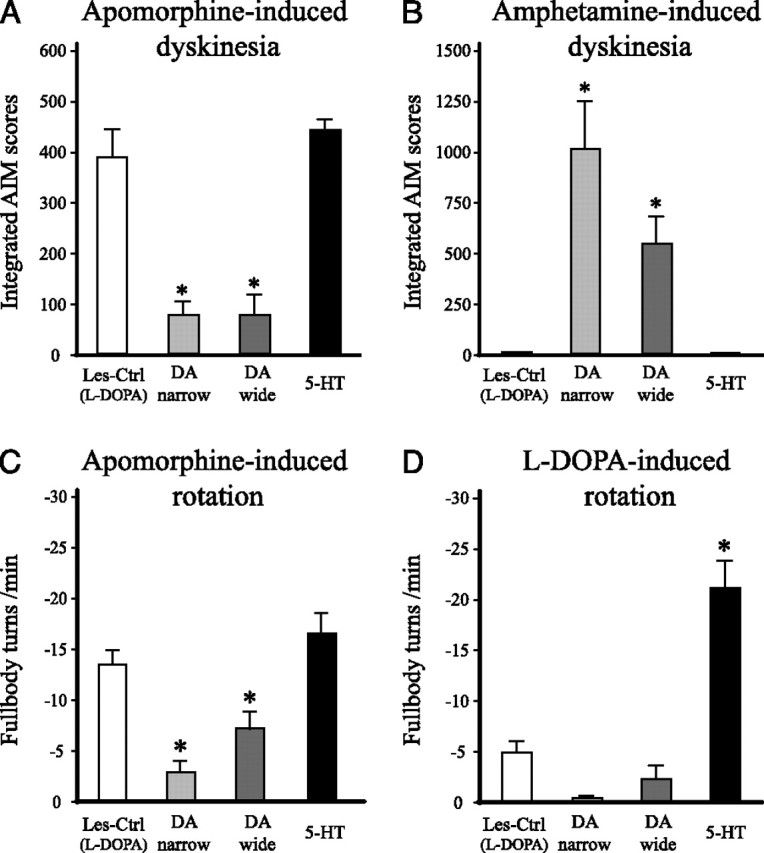Figure 8.

Dyskinesia and rotational behavior induced by direct and indirect DA receptor agonists. A, B, Dyskinesias induced by apomorphine (0.05 mg/kg) and d-amphetamine (1.5 mg/kg) were evaluated at 23 and 27 weeks after transplantation, respectively. Apomorphine-induced dyskinesia (A) was reduced by ∼80% in the two DA graft groups (DA wide and DA narrow), compared with the lesion-only controls [Les-Ctrl (l-DOPA)], whereas the 5-HT graft group did not differ from the lesion controls. Dyskinesias induced by amphetamine (B) were evident only in the groups receiving DA neuron-containing grafts (DA-wide and DA-narrow graft groups), and not in the 5-HT graft group. C, D, l-DOPA- and apomorphine-induced rotation were evaluated (in automated rotometer bowls) as a measure of postsynaptic striatal DA receptor supersensitivity at 19 and 23 weeks after transplantation, respectively. Rotation induced by either apomorphine (C) or l-DOPA (D) was significantly reduced in the DA-wide and DA-narrow graft groups, indicating a partial normalization of DA receptor supersensitivity in the animals with DA neuron-containing grafts. In the 5-HT graft group, rotation induced by apomorphine was unaffected, and l-DOPA-induced rotation (at the 3 mg/kg l-DOPA dose) was markedly increased, compared with the lesion controls. These data indicate that striatal DA receptors remain supersensitive in 5-HT grafts lacking dopaminergic neurons. *Different from Les-Ctrl (l-DOPA). One way ANOVAs, F(3,39) = 27.39 and 10.41 for A and B, respectively; p < 0.001 for both comparisons followed by Dunnett's post hoc test. One-way ANOVAs, F(3,39) = 36.90 and 15.43 for C and D, respectively; p < 0.001 for all comparisons followed by Tukey's HSD post hoc test. Error bars indicate SEM.
